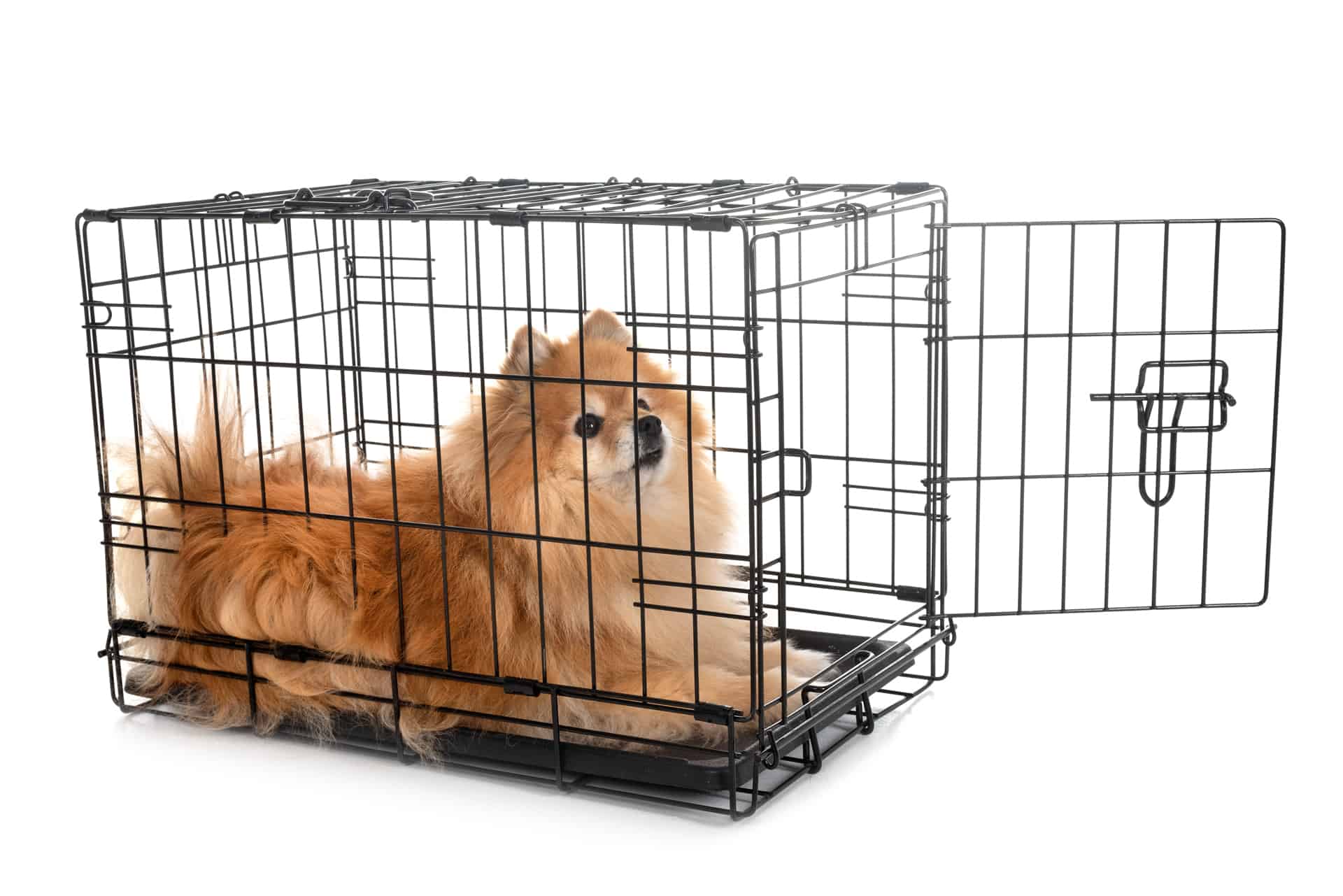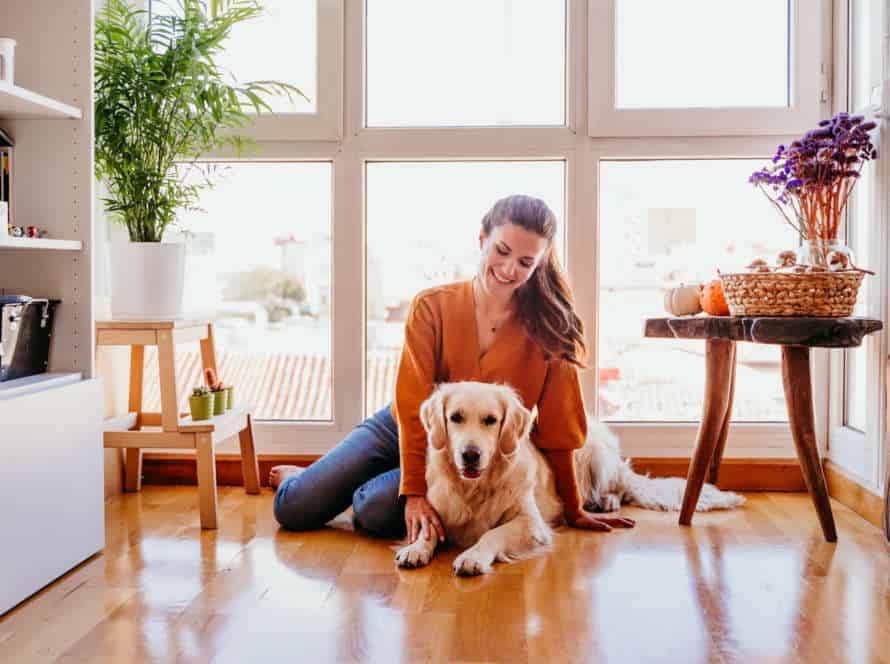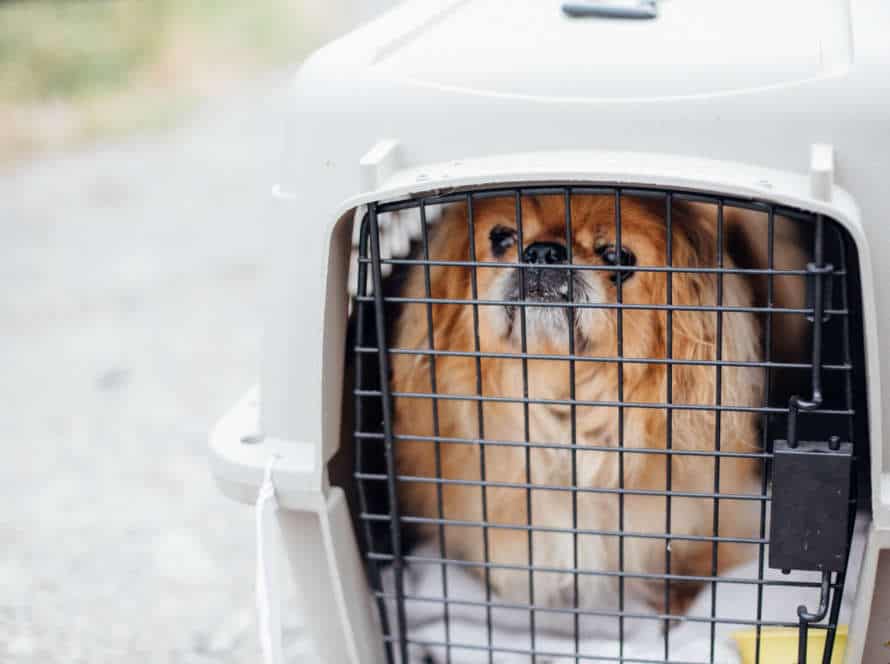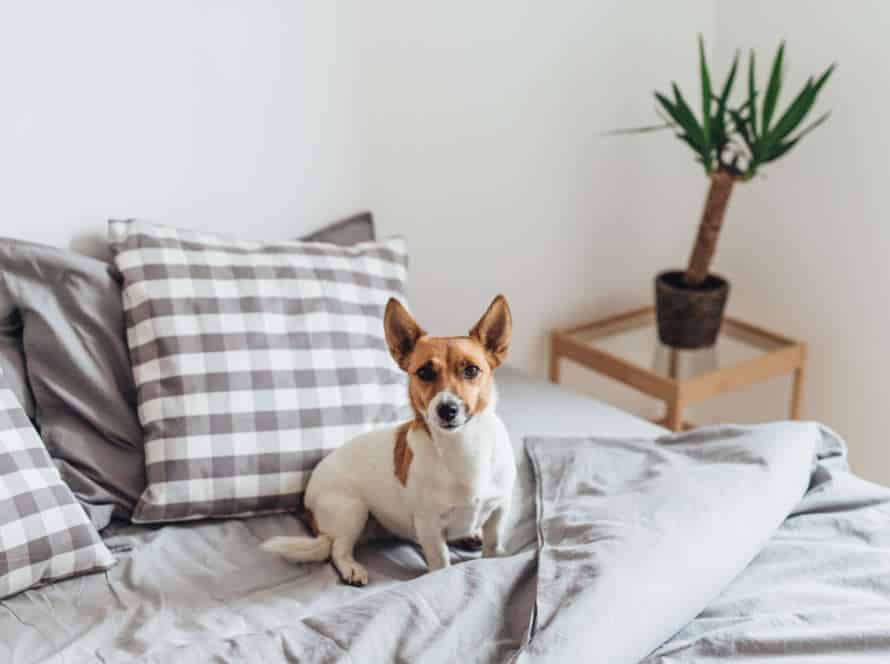What to Do When Your Dog Barks Excessively in the Crate
Excessive barking is a frequent issue with dogs, particularly when confined in a crate. To stop your dog from barking too much in the crate, here are some steps to take:
- Work out the cause: Find out what is causing your dog to bark too much in the crate. Is it weariness, fear or anxiety?
- Make the crate snug: Make sure the crate provides your dog with plenty of room to move around. Place a soft blanket or bed inside to make it even comfier.
- Increase time in the crate: Bit by bit increase the time your dog spends in the crate, allowing it to become familiar with being in there. Start with short sessions and then increase the time slowly.
- Deal with the barking behaviour: When your dog begins to bark, use a command such as “quiet” to stop the barking. Praise your dog when it has stopped barking.
- Get professional advice: If these steps don’t work, seek the help of a qualified dog trainer or behaviourist.
Understanding Why Dogs Bark in the Crate
Dogs bark in their crate for many reasons. Fear, boredom, or stress could be to blame. To better train your pup, it’s important to first understand why they are barking. In this article, we’ll explore what causes crate barking and how to reduce it.
Common reasons why dogs bark in the crate
Why do dogs bark in the crate? It could be a sign of something serious or simply out of boredom or anxiety. Here are some common causes:
- Separation Anxiety – Dogs with separation anxiety may bark excessively to express distress.
- Lack of Exercise – Inactive or unstimulated dogs may bark to express frustration.
- Fear – Scared dogs may bark to show fear of loud noises or other pets.
- Need to Eliminate – Dogs needing to go potty may bark to signal this.
If your pup is barking too much in the crate, find the cause and address it. This could mean providing more exercise or mental stimulation, introducing the crate gradually, or getting help from an expert.
Separation anxiety and the crate
Dogs can bark in their crate out of separation anxiety. It’s common. A crate should be a safe, comfortable place while you’re away. Barking can signal distress. Here are some ideas to help:
- Provide exercise and mental stimulation before and after crating.
- Ease your dog into the crate. Start with short times and increase duration.
- Give them bedding and toys to occupy their time.
- Use a crate cover to create a den-like feel and reduce barking.
- Talk to a trainer or behaviorist if the barking doesn’t stop.
Pro Tip: Separation anxiety is serious and needs patience and care. If overwhelmed, get help.
How to tell if your dog’s barking is excessive
Do you think your pup’s barking is excessive? Look out for these signs:
- Frequency: Is your dog barking constantly or for a long time?
- Duration: Does your pup bark for over 5 minutes?
- Triggers: Does your pup bark too much when it hears loud noises, sees strangers, is anxious, or is bored?
If your pup barks too much, try to figure out why. Training, exercise, toys, and distraction can help stop excessive barking.
Ways to Manage Your Dog’s Barking in the Crate
Excessive barking in the crate is aggravating! There are a few ways to manage it. First, identify the cause. Could it be fear, boredom, or stress? This will help you find the best solution. Here are some techniques you can use:
Create a comfortable and inviting space for your dog
Pamper your pooch with a cozy and inviting space! Here’s how:
- Pick a bed fitting for your pup’s size and sleeping habits.
- Blankets and toys make great cuddly companions.
- Keep the area neat and free from mess.
- Set up the bed in a tranquil, well-ventilated spot.
- No extreme temperatures – not too hot, not too cold.
Managing your dog’s barking in its crate may be tough. These tips can help:
- Ensure the crate is the right size and comfy.
- Let your pup adjust to the crate slowly by starting with short sessions.
- Distract your dog with toys and treats.
- No punishment for barking – it won’t help.
- Consult an animal behaviorist if the barking persists.
Pro Tip: Show your pet some love and affection to make it feel at home!
Teach your dog to associate the crate with positive experiences
Making the crate a nice place for your pup is key to managing their barking. Here’s what to do:
- Associate the crate with good stuff: Give treats, toys, and comfy bedding inside the crate.
- Ease into it: Start with the door open. Then gradually increase time spent in the crate with the door closed.
- Praise and reward: Reward calm, quiet behavior in the crate with treats and praise.
- No punishment: Never punish your dog for barking in the crate. It will only make them hate it.
By doing these steps, your pup can have a peaceful experience in their crate.
Gradually increase crate time and reward good behavior
If your pup is making too much noise in its crate, gradually increasing time there and rewarding good behaviour can help.
Here are the steps:
- Start with short crate times and slowly increase.
- Give treats and praise when it stays quiet. If it barks, wait for a few seconds and then reward.
- Never force it in, and make sure it is comfy in its environment.
- Give treats the first time, and keep giving them throughout.
- Exercise before crate time to help with energy release.
Note: Some dogs may take longer to adjust.
Patience and consistency will help manage barking in the crate.
Techniques to Stop Excessive Barking in the Crate
Common ‘problem barking’ happens in crates with dogs. There are multiple strategies to help your pup cease their barking. Here, we will explore tactics to reduce too much barking in crates. These can range from straightforward distractions to more detailed training.
Use positive reinforcement training techniques
Positive reinforcement training can be great for preventing too much barking in the crate. To help your pup, follow these steps:
- Firstly, teach your dog the “quiet” command. When your pup barks in the crate, say “quiet”. Give them a treat afterwards. They’ll learn that “quiet” means a good thing will happen.
- Secondly, make the crate a positive and comfortable place. Put their bed and toys in the crate. When they go in there on their own, give them treats. This will help make the crate feel less scary.
- Finally, increase the amount of time your dog spends in the crate. Start by keeping them in there when you’re at home, but only for a short amount of time. Slowly increase how long they stay in there. Give them a treat when they’re quiet in the crate. With patience and consistency, these techniques can stop excessive barking in the crate.
Provide mental and physical stimulation outside of the crate
Dogs often excessively bark in the crate out of boredom, fear, or anxiety. But there are techniques to help stop this behavior. Here are a few:
- Exercise and play with your dog before crating them.
- Give them puzzle toys or frozen treats to keep them busy.
- Provide a comfortable and spacious crate, in a quiet spot in your home.
- Gradually increase the time your dog spends in there. Reward good behavior and ignore barking.
- Consider alternatives, such as a baby gate or playpen, if the barking continues.
Remember, every dog is different. You may have to try different things to find what works best for your pup.
Use anti-bark devices as a last resort
Barking is natural for dogs. To address excessive barking in crate without anti-bark devices, try these techniques:
- Exercise and mental stimulation before crating.
- Increase crate time gradually.
- Make the crate comfy and inviting with bed and toys.
- Ignore barking and reward when they stop.
- Use a calm and soothing voice to reassure.
It may take time and patience to train your dog not to bark excessively. Avoid anti-bark devices unless necessary. Pro Tip: Use positive reinforcement and get professional help if needed.
When to Get Professional Help
Yikes! Your pooch is barking way too much in the crate. That can be a real headache. It might ruin your sleep, mess up your peace, and drive you bonkers. So, you may need help to fix the problem.
Now, let’s look at when you should get professional aid from a canine behaviorist.
Sign of needing professional help
Is your pup constantly barking in the crate? That could be a sign that expert help is needed. While some yapping is okay, persistent and excessive yelping can show stress, boredom, or anxiety. Here are some tips to tell if your doggo needs assistance:
- Your dog barks for long lengths of time.
- Your pup’s barking causes disturbance to your family or neighbours.
- Along with too much barking, there are other bad habits such as biting or digging.
- Your pup gets anxious when left alone and is destructive in the crate.
- Trying to stop the barking has been unsuccessful.
If you spot any of these signs, it’s time to get help from a dog trainer or behaviourist. They can assess your doggo’s behaviour and create a training plan that will be helpful in changing the barking behaviour. Don’t forget, too much barking could be caused by deeper issues and can be managed with patience and specialised help.
How professional trainers can help with excessive barking in the crate
Dealing with excessive barking in the crate can be a challenge for pet owners. Professional trainers can help by:
- Working out why it’s happening.
- Showing how to stop the barking.
- Making a plan that works for your pet.
- Teaching you both how to communicate better.
If your pet is barking too much in the crate, it’s wise to get professional help. Trainers can offer humane, effective techniques and strategies for managing your pet’s behavior.
What to expect from professional training sessions
Professional training can make your pup’s behavior, obedience and socialization better. A certified trainer will work with your dog to decide their needs and make a plan based on their character and behavior.
Training could include:
- Obedience
- House training
- Crate training
- Leash training
- Socialisation
- Behaviour change
The trainer will also give you tips and techniques to use at home.
Excessive barking in the crate needs professional help. A trainer can find the reason for the barking and give you solutions to stop it. It’s important to address this, as it can affect your dog’s mental and physical health.
Tip: Do research to pick the right trainer. Get one with experience, good reviews and certification to give your dog the best training.
Frequently Asked Questions
Q: Why does my dog bark excessively in the crate?
A: There could be various reasons why your dog is barking excessively in the crate such as separation anxiety, boredom, lack of exercise, or discomfort.
Q: How can I train my dog to stop barking excessively in the crate?
A: You can train your dog to stop barking in the crate by gradually increasing crate time, providing plenty of exercise and mental stimulation, using positive reinforcement, and seeking advice from a professional dog trainer if necessary.
Q: Can I use a bark collar to stop my dog from barking excessively in the crate?
A: It is not recommended to use bark collars to stop excessive barking in the crate as it can cause anxiety, stress and sometimes may worsen the problem. Using positive reinforcement training techniques can be more effective.
Q: How long should I leave my dog in the crate?
A: The time you leave your dog in the crate depends on their age, breed, and personality. As a general rule of thumb, puppies can be crated for up to four hours at a time, while older dogs can be crated for up to six hours at a time.
Q: Should I remove toys or blankets from the crate to prevent the dog from barking excessively?
A: No, you should not remove toys or blankets from the crate to prevent excessive barking. Instead, you should make sure that the crate is comfortable and provide enough entertainment to keep the dog stimulated.







